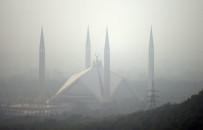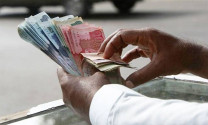Pakistan seeks Chinese waiver, refuses Rs220bn interest payment to IPPs
Govt assures IMF despite Beijing pushing for timely power payments

Pakistan has informed the International Monetary Fund (IMF) that it will not pay Rs220 billion to Chinese independent power plants (IPPs) as interest on delayed payments for purchased electricity and will instead seek a waiver from Beijing.
The government also told the IMF that despite better power sector performance in the last fiscal year, over Rs500 billion more will be added to the flow of circular debt. The flow can only be zeroed by pumping money from the budget.
The Power Division gave a briefing on the fiscal and operational status of the power sector during the second day of talks, according to energy ministry sources. The talks are expected to release $1.2 billion in two loan tranches under two different programmes. They said the IMF was told that the government does not plan to pay Rs220 billion late payment surcharge to the Chinese IPPs set up under the China-Pakistan Economic Corridor (CPEC).
The government recognises only Rs250 billion as principal payments for the purchased electricity. The Rs220 billion outstanding dues are part of the Rs1.7 trillion power sector circular debt.
The Power Division spokesperson declined to comment on the development and referred the matter to finance ministry.
“Please contact the Finance Division for any comments since it’s the leading ministry. Power Division will not comment or reply on any matter under discussion during the (IMF) review to avoid any misunderstanding,” said Zafar Yab Khan, the Power Division spokesperson.
However, the Chinese may not like government’s stance, as indicated in recent CPEC discussions.
According to the proposed minutes of this week’s Joint Cooperation Committee of the CPEC meeting, “the two sides agreed to jointly maintain the stability of the electricity price policy for energy projects under CPEC, resolve disputes through friendly consultation, and neither side shall seek to change the status quo through unilateral actions”.
Since 2017, the country has paid Rs5.1 trillion to 18 Chinese power plants, covering 92.3% of billed amounts, including interest. Pakistani authorities believe the actual remaining energy cost is Rs250 billion, with the rest being late payment surcharges.
Under the CPEC Energy Framework Agreement, Pakistan was required to create a revolving fund with 21% of power invoices to protect Chinese firms from the circular debt crisis. The previous government opened a Pakistan Energy Revolving Account at the State Bank of Pakistan (SBP) in October 2022, with Rs48 billion in annual allocations. But it limited withdrawals to Rs4 billion per month, leading to the current Rs423 billion debt stock.
China reiterated in recent meetings that Pakistan should establish a circular account for electricity bill payment as soon as possible in accordance with the 2014 agreement on energy project cooperation under CPEC. Under CPEC, China set up 8,904 MW capacity power plants with a total investment of $19.5 billion. Beijing also told Pakistan to take more effective measures to pay electricity bills in full and conduct timely foreign exchange settlement to ensure the sustainable operation of energy projects under CPEC.
Sources said that during the meeting, the IMF asked about plunging residential electricity demand, the constant increase in the flow of circular debt and the impact of the floods on fiscal viability of the power sector. They said the Power Division informed the IMF that in current fiscal year 2025-26, another Rs500 billion will be added to circular debt flow. However, the Power Division expects the finance ministry to pump in another Rs540 billion from taxpayers’ money to offset the impact.
The constant increase in the flow of circular debt puts a question mark on the efficiency of the Power Division. The government is relying heavily on budget subsidies to control the increase and is also taking new loans to lower stock of debt.
The spokesperson did not respond to a question regarding reasons for the Power Division’s failure to completely stem losses despite showing good performance in the last fiscal year.
Sources said the IMF was appreciative of the government’s efforts to reduce the stock of circular debt from Rs2.42 trillion to Rs1.6 trillion by June this year. The reduction came on the back of budget subsidies and a fall in losses on account of less recoveries and theft.
The government had projected that roughly Rs340 billion would be added in the flow of circular debt in the last fiscal year, but the actual increase was only Rs45 billion. The IMF acknowledged the improvement. However, it is not enough to sustain the trend in the current fiscal year.
The IMF also inquired about trends in electricity demand. It was informed that residential demand was on the decline, but industrial demand picked up after factories were forced to shift to the electricity grid and abandon gas.
The government is giving preferential treatment to the power sector at the expense of the gas sector, which also has Rs2.6 trillion circular debt. However, the government has not allocated any funds from the budget to reduce gas sector debt. It is also willing to reopen the Qatar LNG deal as it faces a glut because of non-lifting of gas by LNG-fired power plants.





















COMMENTS
Comments are moderated and generally will be posted if they are on-topic and not abusive.
For more information, please see our Comments FAQ